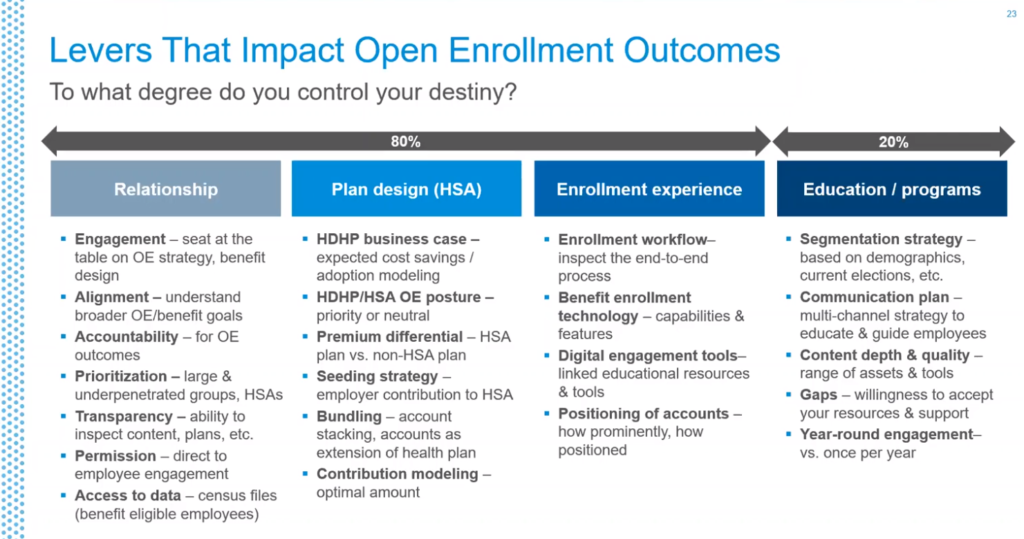Four Factors Affecting Open Enrollment Outcomes
Published on September 28th, 2022
As a benefit administrator, you want as many individuals as possible to take advantage of the benefit accounts you offer. You have done your research to ensure you are offering the best options for your employers and their employees. So why isn’t everyone taking advantage of these programs?
There are four distinct touchpoints affecting open enrollment outcomes – relationship, plan design, enrollment experience, and education/programs. Alegeus SVP of Marketing Jennifer Irwin and Inci Kaya, strategic partner at Aite-Novarica Group, discussed four factors affecting open enrollment outcomes during a recent webinar, which are highlighted below.

Relationship
Relationship can mean a lot of different things for everyone, and at different points in open enrollment. You need to ensure alignment of goals by driving engagement through open dialogue with brokers and employers about their open enrollment strategy and benefit design. Transparency is key here so that everyone can ensure they’re in alignment, especially when it comes to inspecting content, plans and experience. You should also assess accountability for open enrollment outcomes, and prioritize unpenetrated groups, as well as HSAs. If no one is going to be held accountable, or the wrong groups consume too much of your focus, it can be detrimental to your open enrollment program and outcomes.
Having permission to go directly to existing participants or eligible employees is also key for understanding their needs. With this, access to data like census files for benefit eligible employees can also help drive focus and open enrollment outcomes.
Plan Design (HSA)
Ensuring that the plans you offer best reflect the needs of your employers and their employees is crucial for driving adoption. Additionally, designing plans around these needs will help the employers attract and retain talent. Allowing for flexibility in plan design can benefit a diverse workforce – and adding seeding and bundling options can guide people to the right accounts for them.
Helping employers design a plan that works for their business should be partnered with helping their employees understand their options, as well. Plan design is important for generating positive open enrollment outcomes.
Enrollment Experience
Let’s face it – if a process is not simple or intuitive, it is less likely to be fully utilized. It’s important to assess the workflow and technology prior to open enrollment. Is it easy to understand? Would employees need prior knowledge to make an educated decision, or is the information clearly stated and provided?
It’s important to position accounts correctly and in a straightforward manner, as well as bundling where necessary as an extension of a health plan. For contribution planning, provide recommendations to help users determine the optimal amount that they should contribute. When items aren’t necessarily intuitive, provide links to educational resources and tools, which we are about to discuss.
Education/Programs
Education is a crucial aspect of open enrollment, especially for employees who are enrolling for the first time. Having a multi-channel communication plan in place to educate and guide employees to the right plans for them can drive roughly 20% of open enrollment outcomes. A range of assets and tools for all knowledge levels is necessary, including calculators for determining the right amounts and videos that explain each account type.
Open enrollment can be overwhelming, especially for first-time enrollees. Providing educational programs while open enrollment is top-of-mind is necessary, and we recommend building on that momentum with year-round programs and touchpoints. An employee might initially decide not to enroll in an HSA simply because they don’t understand it. Regular touchpoints can give them both the knowledge and confidence to participate.
